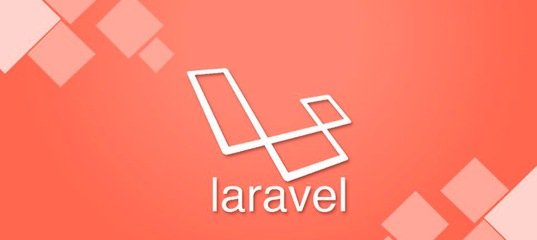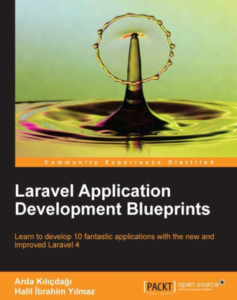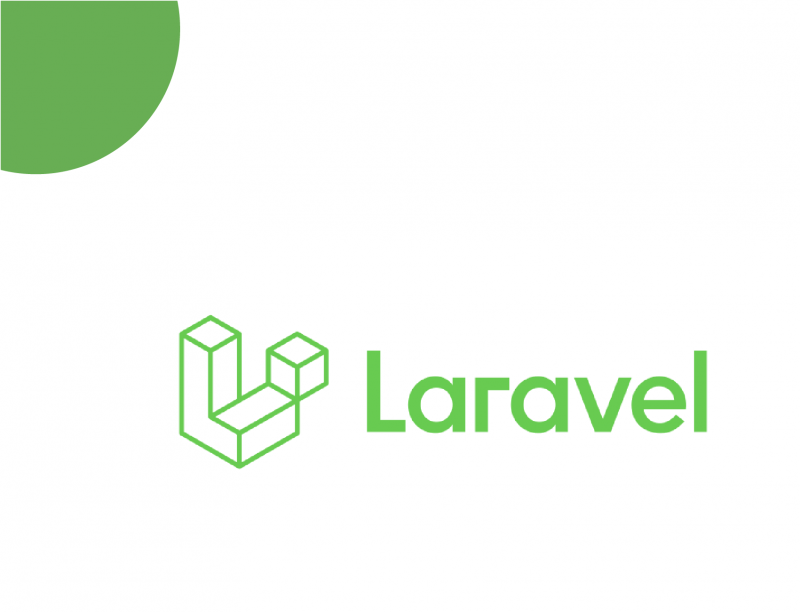Some decades ago, an engineer and a programmer were quite the same people who even fixed electronics.
Nowadays, thanks to technological progress, we have many programming languages, specializations, and directions, and a single person simply does not physically have enough time to study everything around. A typical programmer most likely will not be able to fix smartphone challenges, although he can write an app for this smartphone.
There are many developers with different levels of knowledge: professionals with extensive experience and knowledge of at least several programming languages and development culture, and ambitious beginners with just a strong desire to develop smth.
Many people think that PHP is a programming language, which requires a minimum set of knowledge. It seems like anyone can take and immediately display a code line on a screen. That is why some experienced developers may sometimes consider PHP developers as “fake” developers.
Considering this fact, is it possible to create a serious product on PHP? If you do not want to admit strong sides and benefits of PHP programming language, perhaps, you’d better reconsider your opinion. This Laravel guide will probably help you to do it.
Software development requires more than just the knowledge of a programming language. To create and support a brilliant product, you’ll need additional knowledge and skills.
Laravel is a great solution for everyone who wants to quickly create a safe and reliable web project while staying at the peak of web development technologies.
Contents
What is Laravel?
Laravel is one of the most popular PHP frameworks widely used to build web applications for small to big projects. The framework was created by Taylor Otwell and was initially released in June 2011. Professional developers all over the world choose it because of its features, scalability, and steady performance.
Laravel follows the Model View Controller structure (MVC) that makes it easy to learn and prototype web apps. Nowadays, Laravel is steadily growing and becoming more popular in the PHP-sector of the development industry. Its functionality simplifies the web application development process thanks to robust authentication, routing, mail, sessions, and so on and so forth. You can easily customize Laravel, generating your own project structure that will meet the demand of your app.
Professionals often appreciate the elegant and handy syntax of Laravel, which will let you write expressive and self-explanatory code.

Laravel Ecosystem: Not Just a Framework
If you had only been involved in Frontend development before, then Laravel can be compared with Angular. Just because you get almost everything in the box literally from one line that generates a new project for you (of course, without the front-end part of the project; however, 2-3 more teams and it will turn out to be in place).
Recalling PHP development, Laravel provides almost everything you might want to build a reliable backend application: PHPUnit for testing, Artisan (a command-line interface for database migration, model creation, and other settings), an integrated Homestead server, and comfortable linking view with Blade templates.
Homestead
According to the Laravel approach, you get various powerful and convenient tools that are reliable and easy to use. That is why Homestead is mentioned as number one in the documentation.
Laravel Homestead is a pre-installed Vagrant – box. You have probably used the builds of XAMPP, Abyss Web Server, or downloaded all the pieces necessary for the server to work independently — Apache, PHP, PHPMyAdmin, MySQL, etc.
Homestead creates a kind of “virtual environment” that runs in the same environment as on the server and with the same programs. It quickly and easily recreates its “virtual” boxes, and you don’t have to worry for a long time if you accidentally break something.
However, Laravel is not only about Homestead. If you use Mac OS, you need to try the minimalistic Valet (which does not have so many features out of the box but is much easier to install) and a huge number of additional packages.
Migration system
Laravel provides a migration system to create database structures (like Ruby on Rails). The PHP language can be used for writing migration that will create your database structure instead of using SQL.
Migration is a kind of control system for transferring tables using a table constructor. It allows for avoiding errors and conflicts during the construction of tables in the database for large projects. In case you want to change the table column, you don’t need to repeat creating the table again. Instead, you may run a new migration.
ORM
ORM is an object-relational mapping system that links databases to concepts of object-oriented programming.
It may sound scary, but this is directly related to the migration of databases: each table has its own class — a model that is used only to work with this table. This allows developers to avoid unnecessary work in the database itself by interacting with it again directly from the project.
As a result, it turns out more convenient and reliable. Of course, it will take some time to master the commands and features of model generation, but it will take much more to create a large project with a huge number of tables.
Convenient view with Blade – templates
Blade – templates provide an opportunity to conveniently bind your views. In fact, this is the controller code and export from the remaining Blade templates; but on a large project, it will only be more convenient.
Artisan
Artisan is a command-line tool that ships together with Laravel. Laravel comes with numerous commands that you can run on a command-line interface to perform tasks. Using this tool, you may avoid the most repetitive tasks during development.
App testing and debugging
Laravel comes with PHPUnit to test applications. Actually, it was built with testing in mind so it supports testing and debugging to a large extent.
Additional stuff
Do you want authentication through social networks to quickly appear in your app? No problem, Laravel Socialite will assist.
Want to configure caching? You can do it right out of the box. In case you have many projects that are hosted on various services, VP – Laravel Forge is in place. Finally, if you need WebSockets, for example, for a chat, this is also not a problem. And so on and so forth.
Key Laravel Features and Opportunities
- MVC PHP framework is based on well-known and reliable Symfony components.
- The framework code is separated from the developer code. Each component is easily extensible.
- The necessary modules for the framework are connected in the form of service providers. In Laravel 5.5, it’s easy enough to install the package through Сomposer, and it will be immediately available, without having to write anything in the code.
- Handy routing and validation of incoming parameters.
- The code of web project, CSS, JS, and HTML-code of pages are divided into separate directories. The framework uses the Blade template engine, which allows separating the layout from the PHP code.
- Caching, work with file storage and with various databases.
- Migrations for the database (you can change the structure of the database and roll back changes).
- Queues of tasks, task scheduler, console, work with SSH.
- The advanced functionality of Eloquent ORM provides complete protection from attacks (such as SQL Injection), as well as loading data from several tables (solving the N + 1 problem) or processing data from the database in parts.
- Laravel Collections, the PHP arrays with the advanced features that save a lot of time.
- Caching routing files, configuration files, and templates that speed up the work of the framework.
- Sending notifications in different ways.
- Huge opportunities for testing a web project.
- WebSockets support for creating true interactive apps.
- Multi-language support allows for adding any language.
- A handy interface that allows for generating models, controllers, notifications, running tasks from the job queue, and much more.
- Laravel Tinker (the additional package) that lets you work with project code from the command line.
The framework even has its own site with a library of packages.

-
Laravel Basic Task List
In the Laravel Basic Task List guide, you will find basic information about the Laravel framework, including info about database migrations, the Eloquent ORM, Blade templates, routing, validation, and views.
This starting point to learn the Laravel framework will definitely help all beginners. If you have applied Laravel or other PHP frameworks, you may try one of the more advanced available quickstarts.
-
Laravel Intermediate Task List
The Intermediate Task List guide is created to provide an intermediate introduction to the framework. It also includes useful information about database migrations, the Eloquent ORM, Blade templates, routing, validation, views and also about authentication, authorization, and dependency injection.
In case you are familiar with the Laravel basics, it’d be a great resource to study.
Laravel Services
If you’ve been around on the general Laravel topic over a couple of months, you’ve probably heard of Laravel Ecosystem representatives – Laravel Spark, Forge and Laravel Vapor.
Laravel Spark
Laravel Spark is a tool that is aimed to make it quicker to spin up SaaS apps; it handles user authentications, plans, payments, coupons, and team logic. Instead of recreating functionality with every new Laravel app you create, just use this tool, and you will get all that and a free SaaS landing page to boot.
Forge
Forge is a solution for deploying PHP applications (actually, not only Laravel based). It’s a kind of hosting control panel with special pre-defined server configurations optimized for PHP apps. Forge is designed to boost the efficiency of your development and business processes so that you can get more benefits and successful development projects.
Vapor
Laravel Vapor is a fully serverless deployment platform for AWS. It means that you are allowed to deploy to Vapor, make a few configuration changes and bam your site live. The building block of the whole thing is AWS Lambda, it’s where the actual computing happens.
More Useful Online Resources about Laravel
There are more helpful resources that can delight you on a daily basis. Our Laravel tutorial combines the most interesting and useful.
- Of course, the official website of the framework
- Laravel documentation
- Wikipedia article
- Laravel news
- Books:
- «Laravel Application Development Cookbook» by Terry Matula
- «Learning Laravel 4 Application Development» by Hardik Dangar
- «Getting Started with Laravel 4» by Raphaël Saunier
- «Laravel Application Development Blueprints» by Arda Kılıçdağı and Halil İbrahim Yılmaz
- «Laravel in Action» by Maksim Surguy
- E-books:
- «Implementing Laravel» by Chris Fidao
- «Laravel 4 Cookbook» by Christopher Pitt and Taylor Otwell
- «Laravel: From Apprentice To Artisan» by Taylor Otwell
- «Laravel: Code Bright» by Dayle Rees
- «Jasmine Web App» by Mhd Zaher Ghaibeh
- «Laravel Testing Decoded» by Jeffrey Way
- «Getting Stuff Done with Laravel 4» by Chuck Heintzelman
- «Learning Laravel: The Easiest Way» by Jack Vo
- Packalyst.com and Packagist.org are great sources to find packages. Do not forget about Github as well
- If you need professional support, try the following resources: the official IRC channel, Laravel forum and the forum of Laracasts project, Slackoverflow
- Laravel on social media: official Twitter and Facebook, and G+
- Laravelsnippets – snippets for Laravel
- Laravel recipes
- Laravel Schema Designer
- Relevant blogs:
- Jeffrey Way’s lessons
- YouTube and Vimeo lessons
- Daily digest «Laravel Weekly»
- Laravel podcasts

Wrapup
Thanks to all the features mentioned above and constant improvement, Laravel has proven itself as the best PHP framework. It helps to create a powerful application using a simple way. That’s why Laravel seems like the most used PHP framework today.
Hopefully, this Laravel tutorial will help you to enrich your knowledge base and perhaps to get you started on building your app.





